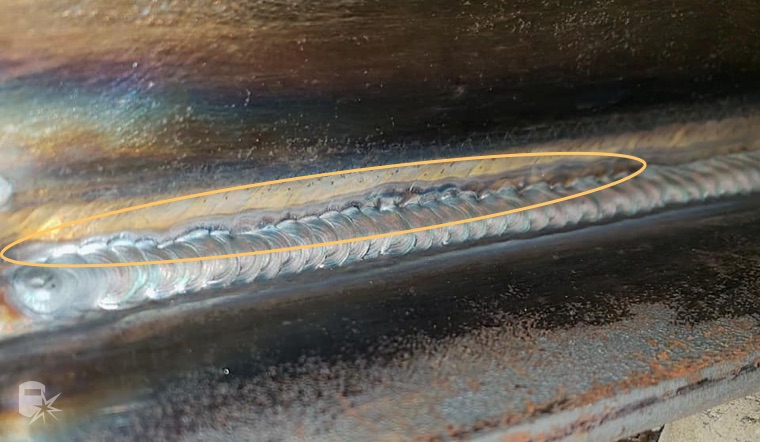Specialist Approaches for Preventing Weld Undercut Effectively
Specialist Approaches for Preventing Weld Undercut Effectively
Blog Article
Mastering the Art of Welding: Exactly How to Avoid Undercut Welding Issues for Flawless Fabrication Results
By understanding the root creates of undercut welding and applying reliable methods to stop it, welders can elevate their craft to new levels of quality. In the pursuit of perfect construction results, mastering the art of welding to stay clear of undercut concerns is not just a skill yet a requirement for those aiming for perfection in their job.
Recognizing Undercut Welding

To protect against undercut welding, welders need to guarantee correct welding specifications, such as adjusting the present, voltage, travel speed, and keeping the appropriate electrode angle. Furthermore, using the ideal welding technique for the details joint configuration is essential. Using weaving motions or backstepping methods can aid make sure proper weld metal deposition and lower the possibility of undercut development. Regular evaluation of welds throughout and after the welding process is likewise critical to catch any type of undercut early and make necessary changes to avoid more defects. Preventing weld undercut. By comprehending the root causes of undercut welding and applying safety nets, welders can achieve top notch, structurally audio welds.
Reasons For Undercut in Welding
Comprehending the aspects that add to damage in welding is necessary for welders to generate high-quality, structurally audio welds. Damaging takes place when the weld steel does not appropriately load the groove created in between the base metal and the previously transferred weld steel. A number of elements can result in undercut in welding. One usual cause is extreme heat input. Welding at heats for extensive periods can result in the base steel melting even more than desired, bring about damage. Insufficient welding current or wrong welding rate can additionally add to damage. Inadequate current may not offer adequate warmth to melt the base and filler steels appropriately, while too much speed can prevent appropriate fusion, creating undercut. In addition, incorrect electrode angles or wrong torch adjustment methods can produce areas of low weld steel deposition, promoting undercut. Comprehending these causes and carrying out proper welding methods can aid protect against undercutting concerns, guaranteeing sturdy and strong welds.
Methods to stop Undercutting

To minimize the risk of undercutting in welding, welders can employ strategic welding methods targeted at improving the high quality and honesty of the weld joints. One effective technique is to change the welding specifications, such as voltage, present, and travel rate, to guarantee appropriate heat input and deposition. Preserving an appropriate electrode angle and making certain constant travel speed can likewise aid prevent undercut. In addition, using the right welding technique for the details joint setup, such as weave or stringer grains, can add to minimizing undercutting. Preventing weld undercut.
Employing back-step welding methods and managing the weld grain profile can likewise assist distribute warm equally and minimize the threat of undercut. Regular examination of the weld joint throughout and after welding, as well as applying high quality guarantee measures, can assist in detecting and resolving damaging issues promptly.
Importance of Appropriate Welding Specifications
Selecting and maintaining proper welding criteria is necessary for accomplishing effective welds with very little flaws. Welding criteria describe variables such as voltage, present, travel rate, electrode angle, and protecting gas flow rate that straight influence the welding procedure. These criteria have to be meticulously readjusted based upon the sort of product being bonded, its thickness, and the click this welding strategy used.
Proper welding criteria guarantee the correct amount of heat is put on melt the base metals and filler material consistently. If the specifications are established as well high, it can cause extreme heat input, causing distortion, spatter, or burn-through. On the various other hand, if the parameters are also reduced, incomplete blend, lack of infiltration, or undercutting might occur.
High Quality Assurance in Welding Operations

Verdict
To conclude, understanding the art of welding calls for a thorough understanding of undercut welding, its causes, and strategies to stop it. By making certain correct welding parameters and executing quality control techniques, perfect construction outcomes can be attained. It is crucial for welders to constantly pursue excellence in their welding procedures to avoid undercut issues and generate top notch welds.
Undercut welding, a typical defect in welding procedures, occurs when the weld steel does not properly fill the groove and leaves a groove or clinical depression along the bonded joint.To protect against undercut welding, welders must guarantee appropriate welding parameters, such as readjusting the present, voltage, traveling speed, and maintaining the right electrode angle. Poor welding wrong or current welding rate can also contribute to damage.To mitigate the danger of damaging in welding, welders can utilize calculated welding methods intended at enhancing the high quality and integrity of my explanation the weld joints.In final thought, grasping the art of welding requires a detailed understanding of undercut welding, its causes, and view it methods to stop it.
Report this page